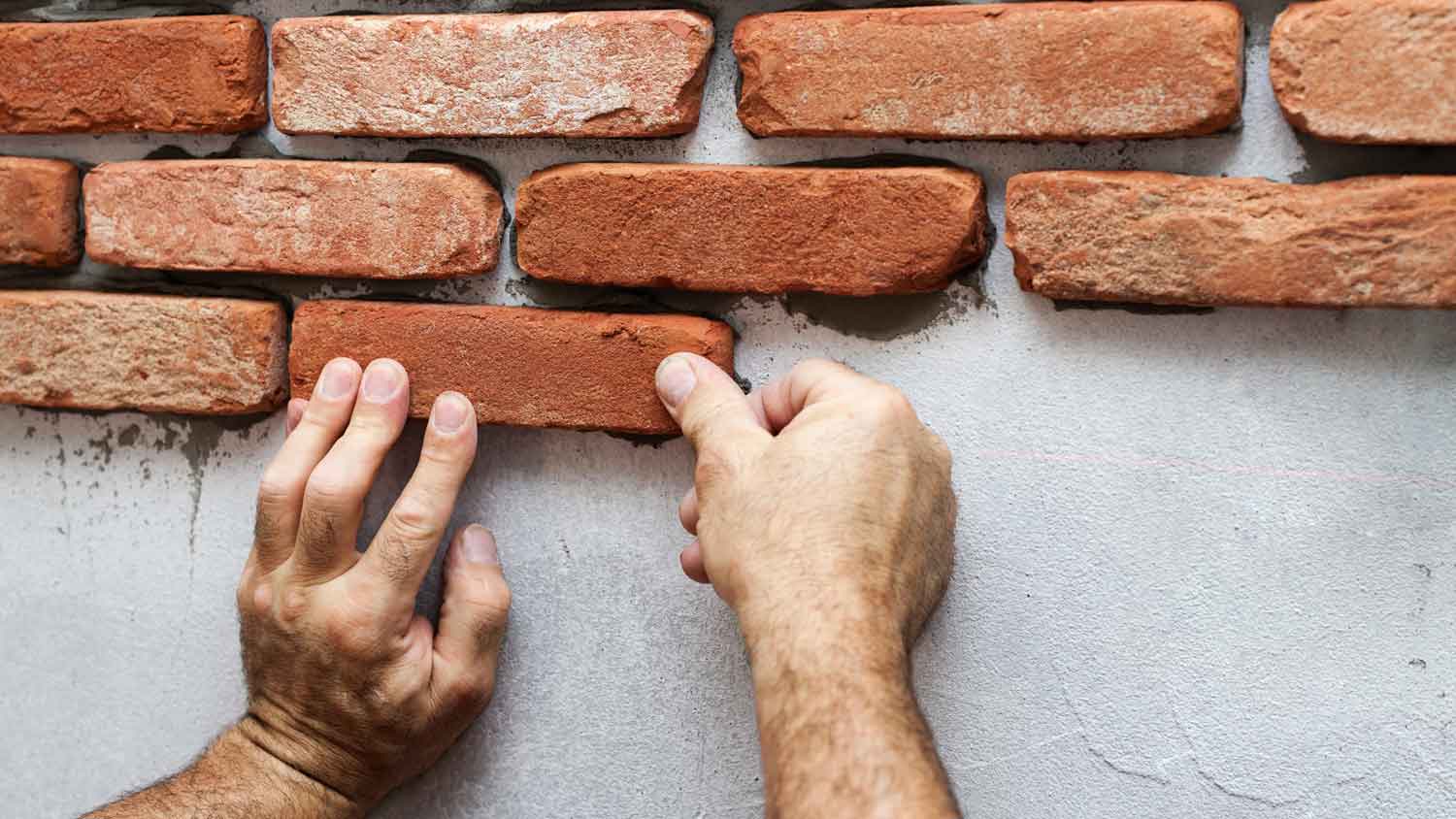
Who to call for stone wall repair? Learn why a masonry pro is best, how repairs work, and what labor costs per hour—start your project now
Stone veneer siding costs $16,000 on average, with material and installation prices typically ranging from $13,000 to $22,000.


Expect to pay $13 to $22 per square foot, depending on material choice and complexity.
Large homes, higher-quality materials, and complex designs drive up costs.
Stone veneer siding can significantly boost curb appeal and long-term value.
Hiring a professional siding contractor is best to handle the labor-intensive installation safely and efficiently.
This article was created using automation technology and thoroughly fact-checked and edited by HomeAdvisor Editor Ryan Noonan.
Stone veneer siding costs $16,000 on average, though it can run from as low as $1,500 to as high as $90,000. Most homeowners spend roughly $13 to $22 per square foot for materials and labor. Costs rise with larger homes, premium stone, and intricate patterns, so build a budget that also covers permits and structural support. A licensed siding pro will deliver a watertight installation that can last for decades with minimal upkeep.
The type of material you choose can significantly outweigh the labor cost of installing stone veneer. Other cost factors include how much area you wish to cover, the quality of the product, and labor costs for more complex applications.
Stone veneer pricing moves almost lockstep with square footage. Wrapping the entire exterior, spotlighting just the front, or adding window accents each pushes material and labor higher with every additional foot. Some homeowners trim the bill by limiting veneer to key areas, while full-house projects may unlock small bulk discounts. For example, covering 250 square feet on a home’s façade runs $9,800 to $18,000 for solid stone siding but only $5,000 to $6,000 for veneer.
Stone veneer installation costs vary widely depending on the type of stone used, such as natural stone like granite and manufactured stone. Real solid stone is the most expensive and the heaviest, so you may need to raise your home’s foundation to support it.
Solid natural stone can reach $50 per square foot, while faux stone runs $6 to $9, mortarless veneer $6 to $10, and manufactured stone $5 to $8. These prices cover materials only—you’ll still add labor. Order 10% to 15% extra for cuts and waste.
Traditional veneer needs mortar, water-resistant barriers, rain screens, wire lath, and a scratch coat. Flashing, screws, and nails add a bit more. Plan for fresh underlayment—about $440 to $520 per 1,000 square feet—and budget $2 to $4 per square foot for a moisture barrier that keeps vapor out of the framing.
Local stone veneer installation professionals typically charge $2 to $4 per square foot to haul materials, set the pattern, and secure each piece. Expect a 25% to 35% bump for complex, multi-story layouts. Opting for a lighter veneer can trim both time on-site and labor fees.
Stone veneer holds up for decades, so a localized crack or a few loose stones usually costs far less to patch than to start over. A siding pro can repair isolated trouble spots for a fraction of a full replacement. If damage covers a large section or stems from structural issues, though, replacing the veneer often makes better financial sense.
Stone veneer delivers a polished façade that can lift curb appeal and property value. Industry data shows the return on investment (ROI) can top 80%, making it one of the more lucrative exterior upgrades. Even using veneer just on entryways or foundation walls often yields a noticeable bump in buyer interest and resale price.
Stone veneer isn’t the most affordable siding option, but these strategies can help you keep costs down:
Limit veneer to focal points—entryways, foundations, or gables—if a full wrap strains the budget.
Swap to manufactured or faux stone for the same look at a lower price.
Gather two or three quotes and steer clear of ultra-low bids that may signal shortcuts.
Ask contractors about payment plans that break the bill into manageable installments.
Stay on top of cleaning and sealing to head off costly repairs later.
No place is more important than your home, which is why HomeAdvisor connects homeowners with local pros to transform their houses into homes they love. To help homeowners prepare for their next project, HomeAdvisor provides readers with accurate cost data and follows strict editorial guidelines. After a project is complete, we survey real customers about the costs to develop the pricing data you see, so you can make the best decisions for you and your home. We pair this data with research from reputable sources, including the U.S. Bureau of Labor Statistics, academic journals, market studies, and interviews with industry experts—all to ensure our prices reflect real-world projects.
From average costs to expert advice, get all the answers you need to get your job done.

Who to call for stone wall repair? Learn why a masonry pro is best, how repairs work, and what labor costs per hour—start your project now

Who to hire to install a block wall? Compare landscapers vs masonry contractors, see average cost, and learn how pros get it done

Wondering who repairs brick veneer? Get clear next steps today, and learn who to call, what pros do, and average repair costs.

Learn how different styles, labor rates, project types, and other factors impact total split-face CMU block costs with our detailed guide.

A bluestone patio is a great addition since it can add value and beauty to your home. Read on to learn more about how much a bluestone patio costs to install.

Learn about the different types of standard and specialized bricks and how the cost of bricks affects your project budget with our brick cost guide.